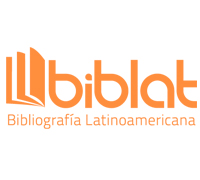The Association of Reporters of Havana in the professional training and development of the Cuban journalistic guild (1941-1953)
Keywords:
Association of Reporters of Havana, National Congress of Journalists, Manuel Márquez Sterling Professional School of Journalism, journalism, regional history, 20.th centuryAbstract
ABSTRACT Introduction: The Association of Reporters of Havana (ARH) constitutes the first journalistic organization in Cuba, created on April 14, 1902. From 1941 to 1953, the lines of action were directed to the formation and development of journalists in the country. The organization of the First National Congress of Journalists, the promulgation of membership laws, the creation of the National Association of Journalists and the provincial branches, as well as the establishment of the «Manuel Márquez Sterling» Professional School of Journalism, were important steps beyond the framework of the capital, causing favorable impacts, not exempt from conflicts, in the professional and social recognition of journalists in Cuba. Methods: The theoretical methods such as the historical-logical, analysis-synthesis, inductivedeductive and the techniques of mixed or semi-standardized interview, allowed the study of the ARH, an important space for developing and channeling the demands of journalists, setting the foundations of a critical journalism and high professional rigor. Results: Taking into account the scarce research existing on the ARH during its vital existence (1902-1962) and the contributions to the journalistic guild, the training and professional development actions promoted by the Association, it is our aim to deepen from a historical perspective. The regional profile adopted clears up the relevance of the links that having its headquarters in the capital, impacted on professionals and apprentices all over the country. This research contributes to the studies of the history of press in Cuba, and enriches the sociohistorical studies about information and communication. Conclusions: From the Havana region, the ARH impacted on a much wider national profile, thus making possible to celebrate a First National Congress of Journalists, and the approval and implementation of the Journalistic Association process, as well as the creation of the «Manuel Márquez Sterling» Professional School of Journalism. These actions concretize the efforts of several decades to put an end to professional intrusion and to institutionalize the teaching of journalism in the country, characterized until then by empiricism
Downloads
References
Cuba. Asociación de Repórters de La Habana. (1952). Álbum del Cincuentenario de la Asociación de Repórters de La Habana. Editorial Lex.
Cuba. Asociación de Repórters de La Habana. (1944). Lisandro Otero Masdeu. Homenaje Nacional. Academia de Ciencias. Empresa El País.
Cuba. Asociación de Repórters de La Habana. (1941). Memoria del Primer Congreso Nacional de Periodistas. Editorial Luz-Hilo. Plazoleta de Belén.
Cuba. Asociación de Repórters de La Habana (1929). Reglamento de la Asociación de Repórters de La Habana (Círculo Nacional de Periodistas). Imprenta Pérez, Sierra y Cía.
Cuba. Colegio Nacional de Periodistas de la República de Cuba. (1943). Estatutos. Editora Nacional.
Boletín Oficial de la ARH (Círculo Nacional de Periodistas). (1942). Época II (16).
Boletín Oficial de la ARH (Círculo Nacional de Periodistas). (1942). Funcionará en abril la Escuela de Periodistas. Época II (24).
BRUGUERAS, M. (2016). Primera organización periodística cubana. Blog Isla al Sur. Universidad de La Habana. https://islalsur.wordpress.com/2016/05/02/primera-organizacion-periodistica-cubana/
DE ARMAS, R. (1942). Una cuartilla. Caja del Retiro de Periodistas. El periodismo en Cuba. Libro conmemorativo por el día del periodista. La Habana, s.e.
GARCÍA, D. (1974). La Asociación de Repórters de La Habana: logros y lacras. Revista UPEC, marzo-abril.
ICHASO, F. (1943). La Escuela de Periodismo más que el triunfo de una clase es el triunfo de la sociedad cubana. Boletín Oficial de la Asociación de Repórters de La Habana (Círculo Nacional de Periodistas), Época III, (2).
LEÓN, R. (1975). Última edición. Bosquejo histórico de la prensa cubana en la lucha de clases. Editorial Arte y Literatura.
LIMA, E. (2014). La prensa cubana y el machadato. Un acercamiento a la relación prensa-poder. Editorial de Ciencias Sociales.
MARRERO, J. (2006). Congresos de periodistas cubanos. Editorial Pablo de la Torriente Brau.
MARRERO, J. (2018). Dos siglos de periodismo en Cuba. Momentos, hechos y rostros. Editorial Pablo de la Torriente Brau.
MORENO, E. (1942). La Escuela de Periodismo. Boletín Oficial de la Asociación de Repórters de La Habana (Círculo Nacional de Periodistas). Época II (16).
RODRÍGUEZ, C. (1944). Batista y Grau. Boletín Oficial de la Repórters de La Habana (Círculo Nacional de Periodistas). Álbum conmemorativo. Edición extraordinaria.
TAMAYO, M. A. (1942). La Escuela de Periodismo. Boletín Oficial de la Asociación de Repórters de La Habana (Círculo Nacional de Periodistas). Época II (13).
TELLERÍA, E. (1986). Diccionario Periodístico. Editorial Oriente.
TEMBRÁS, R. (2006). La Escuela Cubana de Periodistas en la hora crucial del periodismo nacional. Trabajo de Diploma. Universidad de La Habana.
Downloads
Published
How to Cite
Issue
Section
License
Copyright (c) 2022 Mabiel Hidalgo Martínez

This work is licensed under a Creative Commons Attribution-NonCommercial 4.0 International License.
Usted es libre de:
Compartir — copiar y redistribuir el material en cualquier medio o formato
Adaptar — remezclar, transformar y construir a partir del material
La licenciante no puede revocar estas libertades en tanto usted siga los términos de la licencia
Bajo los siguientes términos:
Usted es libre de:
Atribución — Usted debe dar crédito de manera adecuada, brindar un enlace a la licencia, e indicar si se han realizado cambios. Puede hacerlo en cualquier forma razonable, pero no de forma tal que sugiera que usted o su uso tienen el apoyo de la licenciante.
NoComercial — Usted no puede hacer uso del material con propósitos comerciales.
No hay restricciones adicionales — No puede aplicar términos legales ni medidas tecnológicas que restrinjan legalmente a otras a hacer cualquier uso permitido por la licencia.


















